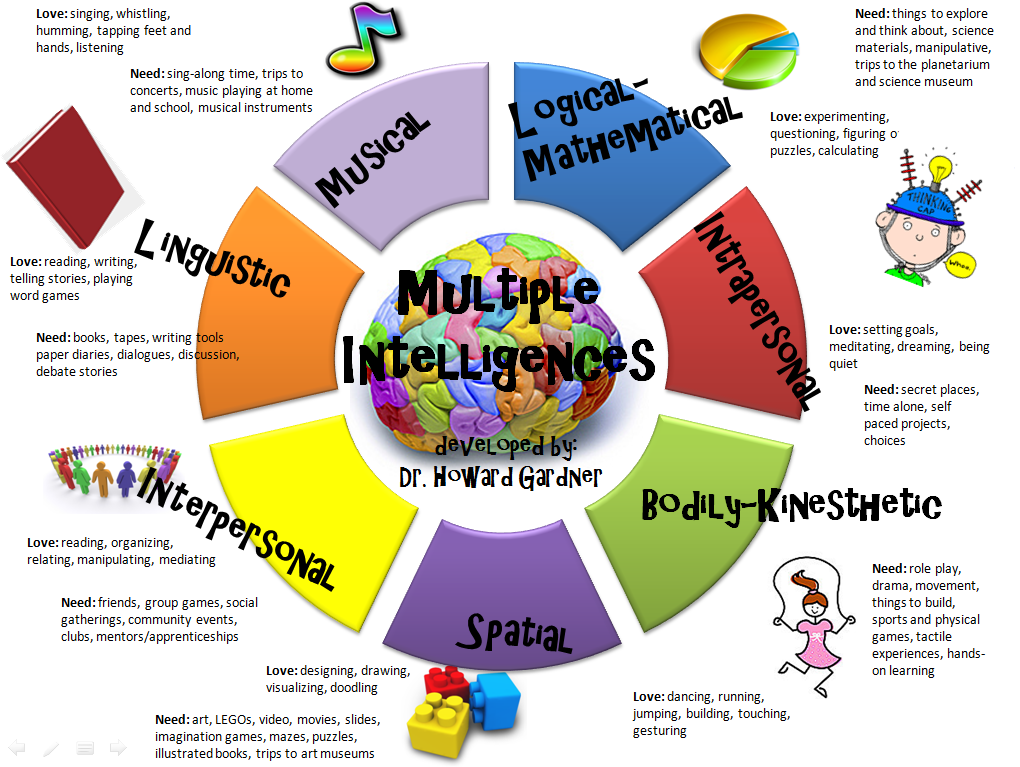I got some really awesome news earlier this week. I would be able to go back to school and complete my undergraduate studies. The first in my family to attend college AND soon to be the first to complete college. Financially I have been struggling and I thought school was going to be put on the back burner- but by Gods
Still- with school approaching, I know others may struggle with studying or finding the best ways to retain information. Developed in 1983 by Dr. Howard Gardner, professor of education at Harvard University investigated through
Traditional notion of intelligence, based on I.Q. testing, is far too limited.
I, for one, am a horrible test taker. Always have been. To be specific- I am talking the standardized western test for advancing from one grade to another. Unlike the IB programme, I was apart of.
Dr. Gardner proposes eight different intelligences to account for a broader range of human potential in children and adults. These intelligences are as followed identified first by what the learning types is and then by how that learning type absorbs information:
- Linguistic intelligence (“word smart”)
Verbal-linguistic intelligence refers to an individual’s ability to analyze information and produce work that involves oral and written language, such as speeches, books, and emails.
The linguistic learner is one who learns best through linguistic skills including reading, writing, listening, or speaking.
- Logical-mathematical intelligence (“number/reasoning smart”)
Logical-mathematical intelligence describes the ability to develop equations and proofs, make calculations, and solve abstract problems.
The logical or mathematical learner must classify or categorize things.
- Spatial intelligence (“picture smart”)
Visual-spatial intelligence allows people to comprehend maps and other types of graphical information.
A visual or spatial learner is a person who learns best if there are visual aids around to guide the learning process.
- Bodily-Kinesthetic intelligence (“body smart”)
Bodily-kinesthetic intelligence entails using one’s own body to create products or solve problems.The Kinesthetic learner is a person that learns best by actually doing something.
- Musical intelligence (“music smart”)
Musical intelligence enables individuals to produce and make meaning of different types of sound.
The musical or rhythmic learner is one who learns using melody or rhythm.
- Interpersonal intelligence (“people smart”)
Interpersonal intelligence reflects an ability to recognize and understand other people’s moods, desires, motivations, and intentions.
The interpersonal learner is someone who learns by relating to others.
- Intrapersonal intelligence (“self smart”)
Intrapersonal intelligence refers to people’s ability to recognize and assess those same characteristics within themselves.
The intrapersonal, as opposed to interpersonal, the learner is someone who works and learns best when they are alone.
- Naturalist intelligence (“nature smart”)
Naturalistic intelligence refers to the ability to identify and distinguish among different types of plants, animals, and weather formations found in the natural world.
The naturalist learns by working with, and experiencing nature.

It is important to identify what is your learning style. Not to be confused with multiple intelligence.
Multiple intelligence is not a one size fits all brains. No- it is the variety of ways humans can use their thinking faculties on what is presented to them.
Learning styles are the ways in which information is received, accessed, stored, and communicated.
Kindergarten teachers, a graduate school instructors, adult learners, even newborns are intelligent enough to learn a given something. It is the ways in which that something is learned is where educators might have a tough time teaching a body of people.
For example, I discovered I am an interpersonal-kinesthetic-visual-learner. In other words, I do really well with groups, I learn by doing- using my hands, getting involved, and by visual aids- I could remember images almost indefinitely.
While in school I excelled at group work. If I had a solo project- it was filled with visual aids and in the few seldom chances if there was an element of touch or bodily movement it was added to the experience.
When I discovered my learning style it greatly helped me for when I am to learn new material. To be really honest, I don’t study. What I find that works for me is being in the moment something new is taught. I retain most of the knowledge in that time- additional details are like the cherry on a sundae for me- I may need it, I may not.
This article should also be noted by instructors at all levels of education. Having a teacher with the ability to adapt the core requirements to each students specific learning styles is a teacher worth having. Every student, I am talking about at all stages of lives-learning-experience, is not the same it takes a skill and tactful teacher to properly educate each student.
Though individuals with a gift for articulation or logical mathematical thinking are pized a bigger conversation should revolve around individuals who’s gifts are elsewhere. Instead of labeling these individual as “learning disabled” we should strive to challenge them according to their modes of learning.
And if you’re eager to determine your own learning style, take this 5-minute quiz, created by Branton Shearer of M.I. Research and Consulting.

Be First to Comment